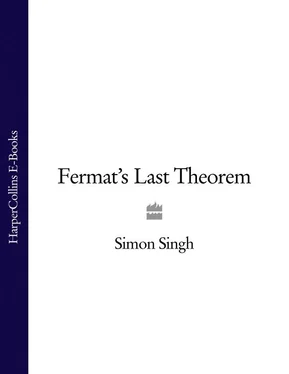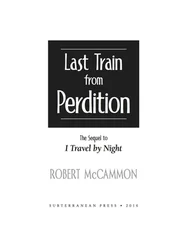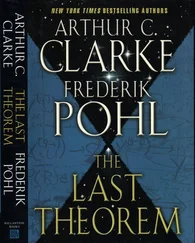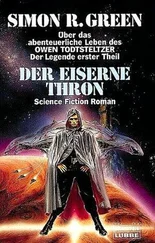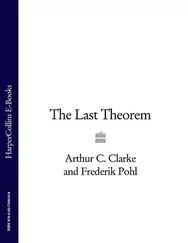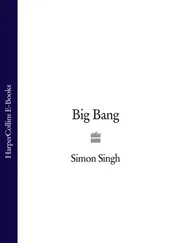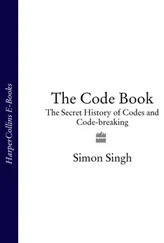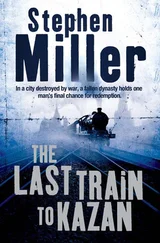That time-span underlies the significance of this puzzle. It is hard to conceive of any problem, in any discipline of science, so simply and clearly stated that could have withstood the test of advancing knowledge for so long. Consider the leaps in understanding in physics, chemistry, biology, medicine and engineering that have occurred since the seventeenth century. We have progressed from ‘humours’ in medicine to gene-splicing, we have identified the fundamental atomic particles, and we have placed men on the moon, but in number theory Fermat’s Last Theorem remained inviolate.
For some time in my research I looked for a reason why the Last Theorem mattered to anyone but a mathematician, and why it would be important to make a programme about it. Maths has a multitude of practical applications, but in the case of number theory the most exciting uses that I was offered were in cryptography, in the design of acoustic baffling, and in communication from distant spacecraft. None of these seemed likely to draw in an audience. What was far more compelling were the mathematicians themselves, and the sense of passion that they all expressed when talking of Fermat.
Maths is one of the purest forms of thought, and to outsiders mathematicians may seem almost other-worldly. The thing that struck me in all my discussions with them was the extraordinary precision of their conversation. A question was rarely answered immediately, I would often have to wait while the precise structure of the answer was resolved in the mind, but it would then emerge, as articulate and careful a statement as I could have wished for. When I tackled Andrew’s friend Peter Sarnak on this, he explained that mathematicians simply hate to make a false statement. Of course they use intuition and inspiration, but formal statements have to be absolute. Proof is what lies at the heart of maths, and is what marks it out from other sciences. Other sciences have hypotheses that are tested against experimental evidence until they fail, and are overtaken by new hypotheses. In maths, absolute proof is the goal, and once something is proved, it is proved forever, with no room for change. In the Last Theorem, mathematicians had their greatest challenge of proof, and the person who found the answer would receive the adulation of the entire discipline.
Prizes were offered, and rivalry flourished. The Last Theorem has a rich history that touches death and deception, and it has even spurred on the development of maths. As the Harvard mathematician Barry Mazur has put it, Fermat added a certain ‘animus’ to those areas of maths that were associated with early attempts at the proof. Ironically, it turned out that just such an area of maths was central to Wiles’s final proof.
Gradually picking up an understanding of this unfamiliar field, I came to appreciate Fermat’s Last Theorem as central to, and even a parallel for the development of maths itself. Fermat was the father of modern number theory, and since his time mathematics had evolved, progressed and diversified into many arcane areas, where new techniques had spawned new areas of maths, and become ends in themselves. As the centuries passed, the Last Theorem came to seem less and less relevant to the cutting edge of mathematical research, and more and more turned into a curiosity. But it is now clear that its centrality to maths never diminished.
Problems around numbers, such as the one Fermat posed, are like playground puzzles, and mathematicians like solving puzzles. To Andrew Wiles it was a very special puzzle, and nothing less than his life’s ambition. Thirty years before, as a child, he had been inspired by Fermat’s Last Theorem, having stumbled upon it in a public library book. His childhood and adulthood dream was to solve the problem, and when he first revealed a proof in that summer of 1993, it came at the end of seven years of dedicated work on the problem, a degree of focus and determination that is hard to imagine. Many of the techniques he used had not been created when he began. He also drew together the work of many fine mathematicians, linking ideas and creating concepts that others had feared to attempt. In a sense, reflected Barry Mazur, it turned out that everyone had been working on Fermat, but separately and without having it as a goal, for the proof had required all the power of modern maths to be brought to bear upon its solution. What Andrew had done was tie together once again areas of maths that had seemed far apart. His work therefore seemed to be a justification of all the diversification that maths had undergone since the problem had been stated.
At the heart of his proof of Fermat, Andrew had proved an idea known as the Taniyama-Shimura Conjecture, which created a new bridge between wildly different mathematical worlds. For many, the goal of one unified mathematics is supreme, and this was a glimpse of just such a world. So in proving Fermat, Andrew Wiles had cemented some of the most important number theory of the post-war period, and had secured the base of a pyramid of conjectures that were built upon it. This was no longer simply solving the longest-standing mathematical puzzle, but was pushing the very boundaries of mathematics itself. It was as if Fermat’s simple problem, born at a time when maths was in its infancy, had been waiting for this moment.
The story of Fermat had ended in the most spectacular fashion. For Andrew Wiles, it meant the end of professional isolation of a kind almost alien to maths, which is usually a collaborative activity. Ritual afternoon tea in mathematics institutes the world over is a time when ideas come together, and sharing insight before publication is the norm. Ken Ribet, a mathematician who was himself central to the proof, only half jokingly suggested to me that it is the insecurity of mathematicians that requires the support structure of their colleagues. Andrew Wiles had eschewed all that, and kept his work to himself in all but the final stages. That too was a measure of the importance of Fermat. He had a real driving passion to be the one who solved this problem, a passion strong enough to devote seven years of his life and keep his goal to himself. He had known that however irrelevant the problem had seemed, competition for Fermat had never lessened, and he could never have risked revealing what he was doing.
After weeks of researching the field, I had arrived in Princeton. For mathematicians, the level of emotion was intense. I had found a story of competition, success, isolation, genius, triumph, jealousy, intense pressure, loss and even tragedy. At the heart of that crucial Taniyama-Shimura Conjecture lay the tragic post-war life in Japan of Yutaka Taniyama, whose story I was privileged to hear from his close friend Goro Shimura. From Shimura too I learned of the notion of ‘goodness’ in maths, where things simply feel right, because they are good. Somehow, the sense of goodness pervaded the atmosphere of mathematics that summer. All were revelling in the glorious moment.
With all this in train, small wonder at the weight of responsibility that Andrew felt as the flaw had gradually emerged over the autumn of 1993. With the eyes of the world upon him, and his colleagues calling to have the proof made public, somehow, and only he knows how, he didn’t crack. He had moved from doing maths in privacy and at his own pace to suddenly working in public. Andrew is an intensely private man, who fought hard to keep his family sheltered from the storm that was breaking around him. Throughout that week while I was in Princeton, I called, I left notes at his office, on his doorstep, and with his friends; I even provided a gift of English tea and Marmite. But he resisted my overtures, until that chance meeting on the day of my departure. A quiet, intense conversation followed, that in the end lasted barely fifteen minutes.
Читать дальше
